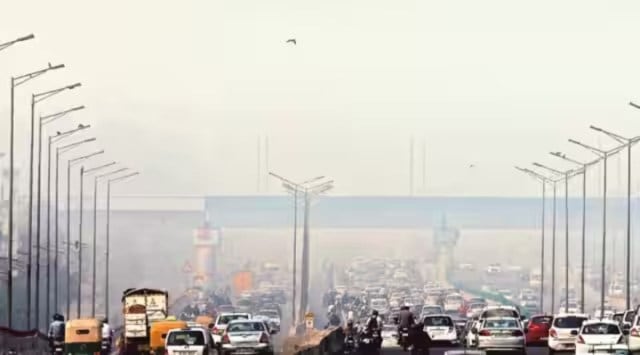
Highway transportation, with India having one of the largest road networks in the world, plays a vital role in connecting cities, villages and industrial centres across the country. At the same time, it is increasing vehicular pollution levels and contributing to the creation of “surface ozone”, a harmful compound resulting from the interaction of volatile organic compounds and nitrogen oxides in the presence of heat/sunlight. While stratospheric ozone plays a crucial role in protecting the Earth from harmful ultraviolet (UV) radiations, “surface ozone” is a significantly harmful air pollutant.
Carbon emissions by vehicles on highways in India are contributing significantly to the overall carbon footprint of the transportation sector. Addressing vehicular pollution and carbon emissions is crucial not only to reduce their contribution to surface ozone formation but also to improve air quality and safeguard public health and the environment. Traditionally, green and shelter belts have been created by planting trees and vegetation alongside the roadways to create buffer zones or corridors. These are now being created by the National Highways Authority of India (NHAI) and other related road agencies. These belts serve various purposes, including air pollution mitigation, noise reduction, aesthetic enhancement, glare reduction, etc. There is a need to revisit the policy practice of green and shelter belt creation and expand its scope by creating Tree Crop Buffer Zones of 500 m width on both sides of highways and including adjacent farmlands. The tree crops are less sensitive to air pollution compared to agricultural crops and they are not directly consumed by humans, reducing health risks. The highway authorities may also consider funding this initiative by levying a cess on users following the “polluters to pay” principle and the State Forest Departments/State Biodiversity Boards may be roped in to provide technical assistance with implementation by the local panchayats/Biodiversity Management Committees (BMCs), that have been set up at the panchayat level across the country.
In this context, it is important to mention that India along with 115+ countries has joined the 30 by 30 High Ambition Coalition (HAC) for Nature and People. The HAC is an international initiative aimed at addressing the global biodiversity crisis and safeguarding nature. The HAC was launched in 2020 and is committed to the goal of conserving at least 30 per cent of the planet’s land and sea areas by 2030 as Target 3 of the Kunming-Montreal Global Biodiversity Framework (GBF). That is a legacy landmark agreed upon by 195 countries in December 2022. This 30 per cent target is seen as a critical threshold to maintain ecological integrity and support the long-term health of the planet besides contributing to climate change mitigation and sustainable development. To achieve this target, countries have to establish protected areas (national parks, wildlife sanctuaries) and conserved areas such as OECMs (Other Effective Area-based Conservation Measures). OECMs are increasingly being recognised as important conservation tools to complement traditional protected areas and promote inclusive and sustainable approaches to biodiversity conservation. The TCBZs along the highways could potentially serve as OECMs and help contribute to meeting India’s 30 by 30 target. The TCBZs would also create a carbon sink and help to achieve carbon neutrality, or even to become carbon negative. The NHAI could also consider selling surplus carbon credits to companies and contribute towards their carbon neutrality goals.
This integrated approach of establishing TCBZs and designating them as OECMs would provide multiple environmental benefits and would serve to enhance India’s leadership in practising and promoting sustainable development.
Mathur is former Chairperson of the National Biodiversity Authority of India and Sapra is the former Principal Chief Conservator of Forests, Haryana